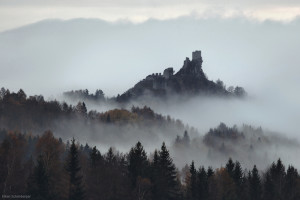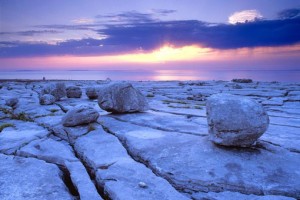This past weekend I was privileged to attend Sirens 2014, a writer’s conference devoted to literature by and about women. I attended so many fantastic keynotes and panels, and found kinship and inspiration in the ideas and creativity of my fellow attendees. One panel in particular, however, sparked something deep within me; the panel discussing Haunted Landscapes, hosted by Kate Tremills, Roberta Cottam, and Kathryn Cottam. Perhaps it was the just the fog-drenched hills of the Columbia River Gorge, but the idea of landscapes echoing with memories of the past promptly tip-toed into my imagination–and refused to leave.
When I first heard the phrase haunted landscape, my mind immediately conjured up the setting of Wuthering Heights; a windswept moor, howling with the voices of restless spirits, and a cold, empty manor, full of memories and secrets. But any landscape, really, can be haunted–by terrible acts of violence, or moments of human bravery. History, memory, action–places are indelibly marked by the past, and by the people whose lives shifted and changed the environment around them.
All too often, a haunted landscape is one that has borne witness to bloodshed, tragedy, or death. Ghosts of terror shade the atmosphere of a place, and some things never leave. We’ve all experienced this–the sudden hush of a cemetery, the creak of tree branches heavy with some unseen burden. In college, I visited the Sachsenhausen Concentration Camp just outside Berlin. From the moment I set foot through those gates, I sensed the layers of memory and pain etched into the very earth I walked on. The site of the Battle of Culloden–a battlefield soaked with the blood of an entire people, where the grass and sky heard the final breaths of a thousand brave soldiers. Tiananmen Square. The Tower of London. A Native American burial mound.
But even as human history and memory can haunt a landscape, so too can a place or environment haunt our minds and souls. From the mundane to the extraordinary, the landscapes that make up the backdrops of our lives can stick with us like a handprint on the heart. Your childhood home. The towering sycamore tree in the front yard that grew up with you, until its lowest branches were too high to grasp. The abandoned quarry overgrown with gorse bushes where you used to play. The vast expanse of the Burren, the cracked karst limestone giving way only to man-made monuments from another time, like Poulnabrone Dolmen.
Even landscapes we have never personally visited can haunt us, specters of hopes and dreams that may or may not come to pass. The idea of home; a physical place that calls to you from far away, and when you finally arrive, embraces you body and soul. My friend Emmie speaks of the moment she stepped off the plane in Scotland–she knew, without a doubt, that she had come home. Even fictional landscapes can haunt our imaginations. The Yorkshire setting of Jane Eyre, complete with Thornfield Hall and its owner, brooding Mr. Rochester. Narnia, where the animals dole out wisdom and magic lurks around every corner. Carlos Ruiz Zafon’s Barcelona, where the Cemetery of Forgotten Books holds the secrets of the ghosts who haunt its twisting streets.
As humans, we cannot separate ourselves or our lives from the places we inhabit. Human interactions with the landscape reverberate through the ages and through the rocks, trees, cities and monuments that exist today. We are ourselves merely ghosts–what impact will we make?
Are you haunted by a landscape, real or fictional? Leave your thoughts in the comment section below!



0 Comments